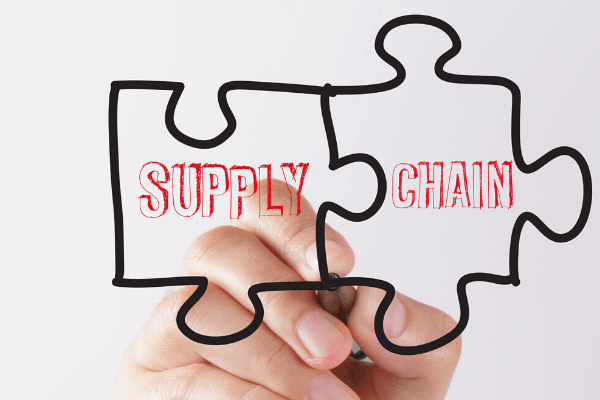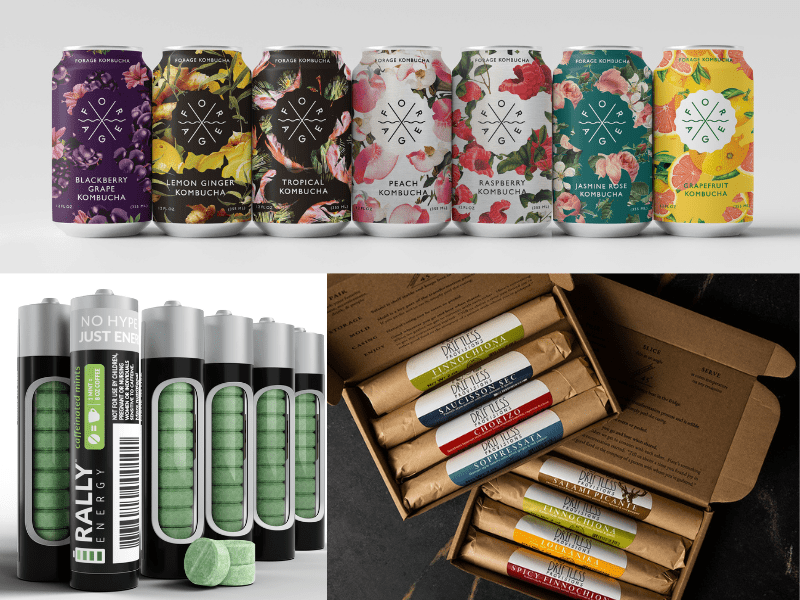Before COVID-19, consumers didn’t need to think much about the food and beverage supply chain. If they wanted a product, they went to the store and almost always found it. Nowadays, though, with toilet paper still in short supply and favorite foods continually out of stock, many are realizing for the first time that there are many steps are involved in getting products onto retail shelves and into their carts—and that a global pandemic can mess everything up.
Food and beverage brands, on the other hand, have never had the luxury of ignoring the supply chain. When new entrepreneurs enter the space, they get a hard and fast education on the complexities of the system. However, once they find ingredient sources, score distribution deals and land retail accounts, they might assume that because everything is working like clockwork now, it will continue to. This may lead them to focus their attention elsewhere and pay their supply chains little mind.
Big mistake, which many entrepreneurs have learned the hard way through COVID-19.
But even without the pandemic upending the normal availability and movement of goods, taking supply chains for granted has never been wise. It’s never been something food and beverage brands or even farmers could afford to overlook. The system is designed for continual high output, and it’s rigid, disjointed and ill-equipped to respond to massive disruption, as Brad Rostowfske, founder of Raise the BAR Innovation and director of industry growth at FaB Wisconsin, explains in the latest Edible-Alpha® podcast. So it wasn’t a matter of if a major event would throw everything out of whack—it was a matter of when.
Although Brad is working with key stakeholders to reconstruct the supply chain to be more collaborative, flexible and functional despite curveballs, for now, food and beverage brands must work within the system we’ve got. Which means the onus remains on you to keep a constant close eye on your value chain and take proactive measures to prepare for potential future disruptions. Here’s how:
- Map out your entire supply chain. Many food entrepreneurs can quickly rattle off which ingredients they get from certain suppliers or where their packaging comes from. But if you haven’t yet done so, sit down and sketch out every source and step in detail to provide a comprehensive picture of the entire chain.
- Forecast demand. In the midst of a pandemic riddled with unknowns, it can be tricky to predict demand for your products and the ingredients needed to manufacture them. But give it your best shot based on pre-COVID patterns, current market dynamics and expected near-future trends. This will give you a sense of the inputs you’ll need to access and the outputs you’ll be asked to deliver going forward.
- Identify risk areas and potential disruptions. Beyond the coronavirus-wreaked havoc, think about other possible causes of supply chain snags. For instance, floods, droughts and other extreme weather events can destroy crops and create shortages of certain ingredients. Tariffs could impede exports. An ingredient supplier could go belly up. Prices of key product components could skyrocket. Figure out where your greatest vulnerabilities lie.
- Craft contingency plans. Should a major disruption to your supply chain occur, what will you do about it? Have you researched alternate ingredient suppliers and identified viable backups you can tap in a pinch? If processes or logistics break down, do you know how you’ll address them while keeping the train moving? Now is the time to figure this stuff out.
- Track movement meticulously. Today, there is an abundance of supply chain management software and platforms to help food and beverage brands stay on top of their systems. Consider investing in these tools, or at least have a process in place to keep close tabs on your supply chain’s flow.
- Hire dedicated supply chain personnel. Startup brands may not be able to afford a full-time supply chain guru, but if you can, strongly consider it. Also look into part-time contract help or ensure that someone on your team has a good grip on this area and can take ownership of it.
And now, our roundup of the best food and beverage finance news, events and resources from around the web…
 Business Model Insights
Business Model Insights
- Label Insight report shows millions of dollars in missed opportunity for brands selling online (FoodNavigator-USA) Despite online grocery taking off in recent months, CPG brands may be leaving millions of dollars of missed revenue on the table by not highlighting key product attributes when they present their brands online.
- What natural products industry members need to know about racial inequity (New Hope Network)
- How to build excellent team culture while working remotely (New Hope Network)
 Raising Capital
Raising Capital
- The 3 things every natural product startup should be doing (The Intertwine Group) “It always winds up costing more money than one thinks to grow a brand. Regardless of whether you plan to bootstrap, fund through cash-flow, or have just successfully closed a financing round, you better prepare to raise more funds.”
- Entrepreneurs share how industry, investors can make good on promises to ‘do better,’ support anti-racism (FoodNavigator-USA)
- 8 Keys To Hooking Investors, Even If They Are Sharks (Startup Professionals Musings)
 CPG/National Brands
CPG/National Brands
- How Big Food is responding to coronavirus—and what natural brands can do to compete (New Hope Network) America’s biggest food and beverage companies are having an unprecedented heyday, launching new and reformatted products to meet the pandemic consumer’s needs. Natural brands can take a page from their playbook to remain competitive.
- A historic reckoning with race leaves problematic food brands without an easy path forward (Food Dive)
- Product transparency paramount in omnichannel retail world (Supermarket News)
 Market Trends
Market Trends
- How is the coronavirus pandemic and unemployment reshaping snacking? (FoodNavigator-USA) The ongoing COVID-19 pandemic has reconfigured virtually every aspect of our lives, including what, when and how we eat. New research shows our emotions are influencing food selection now more than ever.
- COVID-19 will shape organic industry in 2020 after banner year in 2019 (Organic Trade Association)
- Packaged Foods Are Seeing a Spike in Demand That Could Continue for Years (Adweek)
 Farming and AgTech
Farming and AgTech
- Dairy industry faces a slow recovery from the pandemic (Food Dive) New research predicts increased retail sales and lower foodservice sales will begin to converge, restoring some balance to dairy markets. But this won’t happen overnight and things may never completely return to normal.
- Think tank proposes dramatic expansion of conservation easements (Successful Farming)
- ‘Regenerative agriculture could reduce volatility in the feed system’ (FeedNavigator)
 Deals/M&A
Deals/M&A
- Dairy supply chain software maker Dairy.com purchases Orbis to up traceability offering (AgFunder News) The acquisition will enhance the platform’s ability to provide its target customers with end-to-end supply chain digitization.
- KKR and former Dean Foods CEO win bankruptcy auction for Borden (Food Dive)
- With Oprah and Katy Perry as Investors, Apeel Sciences Raises Millions to Fight Food Waste (Food Tank)

Virtual events
- Ongoing: Edible-Alpha® Huddles for consultants and entrepreneurs.
- SHIFT20: IFT Food Expo: 7/13–7/15
- Spark Change (in lieu of Natural Products Expo East): August dates TBA
- Food Automation and Manufacturing Conference and Expo: 9/13–9/16 in Miami, FL
- Seafood Expo North America: 9/22–9/24 in Boston, MA
- (CANCELED) Natural Products Expo East: 9/23–9/26 in Philadelphia, PA
- (CANCELED) World Dairy Expo: 9/29–10/3 in Madison, WI
- Food Safety Summit Conference & Expo: 10/19–10/22 in Rosemont, IL
- Food Edge Summit: 10/21–10/22 in Boston, MA
- Bakery Showcase Toronto:10/8–10/9 in Toronto, Ontario
- Produce Marketing Association Fresh Summit: 10/15–10/17 in Dallas, TX
- Americas Food & Beverage Show: 11/2–11/3 in Miami, FL
- PACK EXPO International: 11/8–11/11 in Chicago, IL

